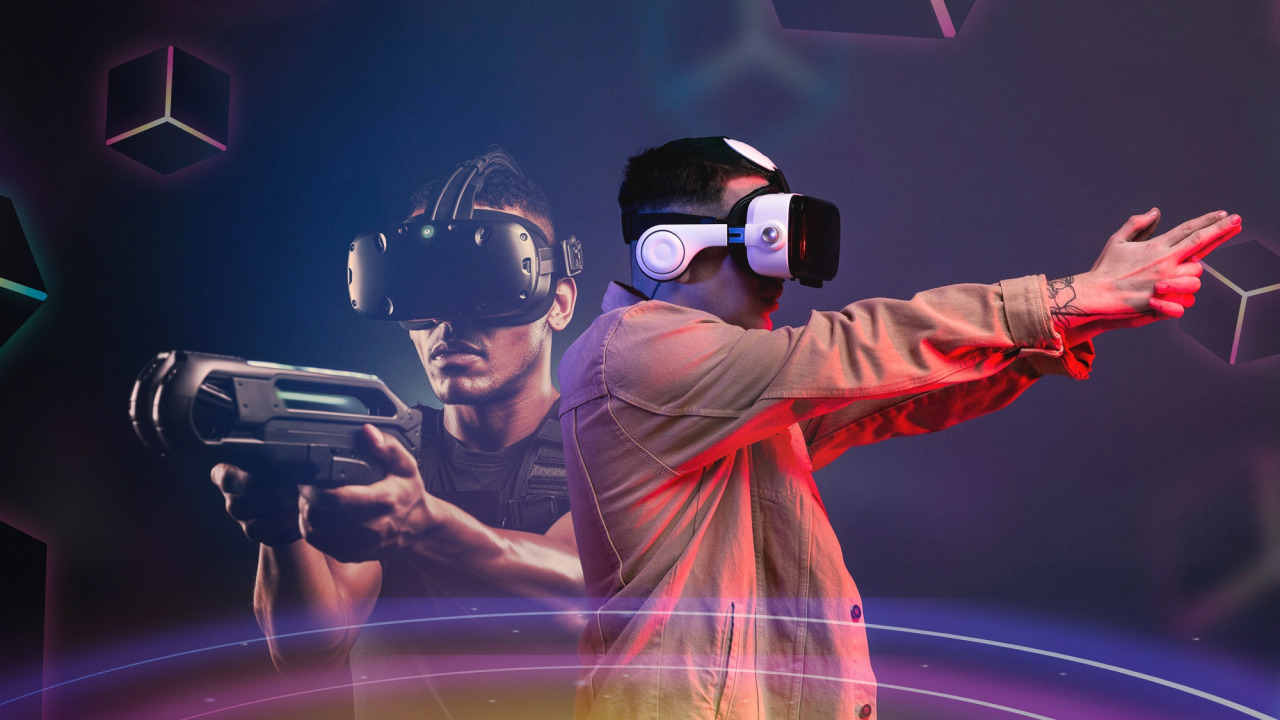
The Transformation of Gaming: From Console to Cloud
Gaming has evolved significantly over the decades, transitioning from simple pixelated screens to fully immersive virtual worlds. In 2025, the gaming industry is at a transformative juncture, with cloud gaming and virtual reality (VR) taking center stage. These advancements are not only redefining how games are played but also expanding their accessibility to a broader audience.
Cloud gaming, in particular, is poised to revolutionize the industry by eliminating the need for high-end consoles or gaming PCs. Simultaneously, innovations in VR are creating more immersive experiences, allowing players to step into the game like never before. This article explores these trends, the technological advancements driving them, and the challenges they face as they reshape the future of gaming.
The Rise of Cloud Gaming
Cloud gaming, often referred to as “gaming as a service,” enables players to stream games directly from servers without the need for expensive hardware. Instead of downloading or installing games, players access them in real-time through the internet.
Major companies like Microsoft, NVIDIA, and Google have invested heavily in cloud gaming platforms. Xbox Cloud Gaming, for instance, integrates seamlessly with its Game Pass subscription, while NVIDIA GeForce Now offers a high-performance solution for streaming graphically intensive games. Google Stadia, despite its initial challenges, has also contributed to the growing popularity of cloud gaming by showcasing the potential of the technology.
One of the most significant advantages of cloud gaming is its accessibility. Gamers no longer need to invest in high-cost consoles or gaming PCs, as games can be streamed to a variety of devices, including smartphones, tablets, and low-end laptops. Furthermore, cloud gaming provides instant access to a vast library of titles, eliminating the need for lengthy downloads or installations.
By 2025, the proliferation of 5G networks and improved internet speeds has further reduced latency, making cloud gaming a viable option for competitive play. However, as promising as it is, the shift to cloud gaming is not without its hurdles, such as infrastructure demands and data privacy concerns.
The Role of Virtual Reality in Gaming
Virtual reality has made remarkable strides in the gaming industry, offering an entirely new dimension of immersion. Unlike traditional gaming, VR enables players to interact with virtual environments as though they were physically present.
In recent years, VR hardware has become more advanced and affordable. Headsets like the Oculus Quest 2, PlayStation VR, and HTC Vive have set new benchmarks for performance and usability. These devices, combined with motion controllers, allow players to engage with games in more natural and intuitive ways. For example, VR games like Beat Saber, Half-Life: Alyx, and No Man’s Sky VR showcase the potential of immersive gameplay.
The appeal of VR extends beyond gaming entertainment. Developers are exploring VR applications in education, training, and therapy, further solidifying its relevance in modern technology. However, challenges such as the high cost of entry, motion sickness for some users, and the need for a dedicated play area remain barriers to widespread adoption.
Innovations in Gaming Technology
Technological advancements are at the heart of gaming’s evolution. From smarter artificial intelligence (AI) to groundbreaking graphical capabilities, the industry is continually pushing the boundaries of what’s possible.
AI in Gaming
AI is revolutionizing the way games are developed and experienced. Developers now use AI to create more dynamic and unpredictable non-player characters (NPCs), enhancing the realism and engagement of gameplay. For instance, NPCs can adapt to player behavior, offer tailored challenges, or contribute to evolving storylines, making each playthrough unique. These AI advancements in gaming are part of a larger technological transformation, where artificial intelligence is reshaping industries far beyond gaming.
Beyond gameplay, AI is also used in procedural content generation, where algorithms design levels, environments, or entire worlds without human intervention. This not only saves development time but also introduces infinite replayability in certain game genres.
Advancements in Graphics
Gaming visuals have come a long way, with technologies like real-time ray tracing and photorealistic textures setting new standards. Ray tracing simulates the behavior of light in real-time, creating lifelike reflections, shadows, and ambient lighting. By 2025, even mid-range gaming devices are equipped to handle these advanced graphics, blurring the line between virtual and real worlds.
Haptic Feedback
Haptic feedback is another innovation enhancing immersion. Devices like the PlayStation DualSense controller and haptic suits allow players to feel in-game actions, such as the recoil of a gun or the sensation of rain. These tactile experiences deepen engagement and bring an added layer of realism to gameplay.
Challenges Facing Cloud and VR Gaming
While the future of gaming looks promising, several challenges need to be addressed to ensure its seamless adoption and success.
Infrastructure Limitations
Cloud gaming relies heavily on robust internet infrastructure. High-speed connections with minimal latency are essential for delivering a smooth gaming experience. Unfortunately, not all regions have access to reliable internet, creating a digital divide that limits cloud gaming’s reach.
High Costs of VR Adoption
Although VR has become more accessible, the cost of high-quality headsets, controllers, and compatible hardware remains a barrier for many players. Additionally, the steep development costs for VR games often result in limited content libraries, making it harder to justify the investment.
Data Privacy Concerns
With cloud gaming and VR collecting vast amounts of user data, concerns over privacy and data security are growing. Ensuring that players’ personal information is protected is critical for maintaining trust and encouraging adoption.
The Future of Gaming
Looking ahead, the gaming landscape in 2025 and beyond will be shaped by continuous technological innovation and shifting consumer preferences.
Cross-platform play, which allows players on different devices to connect seamlessly, is expected to become the norm. This trend fosters inclusivity and community, enabling gamers to play with friends regardless of their platform.
Augmented reality (AR) is another area of growth, blending virtual elements with the real world to create unique gaming experiences. Titles like Pokémon GO have already demonstrated AR’s potential, and future developments are likely to expand its applications.
Culturally, gaming is cementing its role as a mainstream form of entertainment. The rise of eSports, streaming platforms like Twitch, and global gaming communities highlight the industry’s influence on modern society. Gaming is no longer just a hobby—it’s a lifestyle, a career, and a means of social connection.
Transforming the Way We Play
Cloud gaming and virtual reality are driving a monumental shift in the gaming industry, making it more accessible, immersive, and innovative than ever before. As technology continues to evolve, players can look forward to an exciting future filled with possibilities.
For gamers and developers alike, staying informed about emerging trends and challenges is key to embracing this new era of gaming. Whether you’re streaming your favorite titles via the cloud or stepping into a fully immersive virtual world, one thing is certain: the way we play will never be the same.






